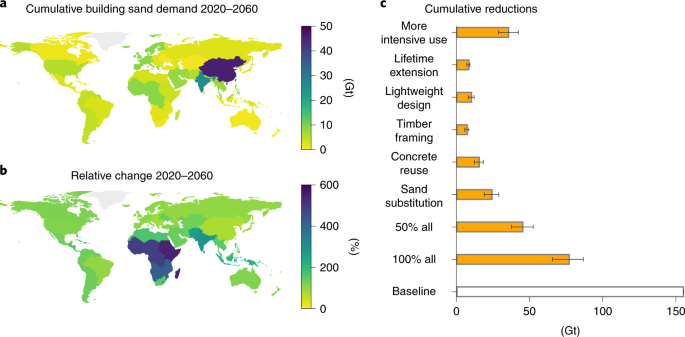Play all audios:
There is a rapidly unfolding sand supply crisis in meeting growing material needs for infrastructure. We find a ~45% increase in global building sand use from 2020 to 2060 under a
middle-of-the-road baseline scenario, with a 300% increase across low-and-lower-middle-income regions and a slight decrease in higher-income regions. Half of this demand may be avoidable
using several material efficiency strategies in concert. International cooperation is essential for addressing vulnerabilities and inequalities.
This research relies entirely on publicly available data as referenced. We have also deposited them in the Zenodo repository21 in a form that can be easily used with our model code. Source
data are provided with this paper.
The python code of the building sand model is publicly available from the Zenodo repository21.
X.Z. acknowledges the support of the China Scholarship Council (grant no. 201806050096).
Institute of Environmental Sciences (CML), Leiden University, Leiden, the Netherlands
Xiaoyang Zhong, Sebastiaan Deetman, Arnold Tukker & Paul Behrens
Copernicus Institute for Sustainable Development, Utrecht University, Utrecht, the Netherlands
Netherlands Organization for Applied Scientific Research TNO, The Hague, the Netherlands
X.Z. and P.B. designed the research. X.Z. and S.D. developed the model and collected the data. X.Z. performed the analysis. X.Z. and P.B. drafted the manuscript. A.T. and S.D. contributed to
reviewing and editing.
Nature Sustainability thanks Zhi Cao and Chris Hackney for their contribution to the peer review of this work.
Publisher’s note Springer Nature remains neutral with regard to jurisdictional claims in published maps and institutional affiliations.
Supplementary methods, discussion, Figs. 1–5, Tables 1–6 and references.
Anyone you share the following link with will be able to read this content:

